How to select Best Plants for Aquaponics: A Complete Guide
Introduction to Aquaponics:
As Aquaponics is like the ultimate plant and fish buddy system. So It is very essential to know about best plants for aquaponics to cultivate greenery in this aquatic heaven. We can imagine a mini ecosystem where fish and plants combines together to create a green paradise. A self-sustaining ecosystem where plants and fish work together in harmony. That’s the magic of aquaponics! It’s like having your little garden where fish are crucial in keeping your plants happy, and vice versa.
In addition to it, it’s a fantastic approach of growing plants without soil, using fish waste instead. The fish swim happily in a tank and their waste becomes a nutrient-rich potion for the plants. This nutrient-rich water travels to the plant bed, where veggies and herbs grow like they’re on a green carpet.
So, this situation creates best suitable environment for both fish and plants. The fish get a clean home, and the plants get a gourmet meal. It’s like having a green party where everyone benefits each other. It’s an eco-friendly system in which we can save our water and space also. Aquaponics is like the modern way as compared to traditional gardening, where fish and plants team up to make gardening a breeze.
How Does Aquaponics Work?
Now the question arises especially for begginers “How does aquaponics work“. In simple words, Your fish are happily swimming in their tank. As they go about their aquatic business, they release ammonia-rich waste. Instead of turning your nose up at this fishy business, embrace it! The water containing this waste is then pumped into grow beds where plants are happily waiting. Bacteria, the unsung heroes of aquaponics, convert ammonia into nitrates—a feast for your leafy companions that is cleaned and enriched, the water is cycled back to the fish tank, and the dance continues. It’s a synchronized ballet of nature in your backyard.
In this blog post, we’ll explore the wonderful world of aquaponics and guide you how to select the best plants for aquaponics set up.
Choosing Best plants for aquaponics
As far as we discuss about choosing the right plants for our aquaponics system, It is just like to select perfect team members for our project. They should complement to each other. From the juicy allure of tomatoes to the refreshing crunch of cucumbers and the robust presence of cabbage, these plants are not just vegetables; they’re the backbone of your aquaponic oasis.
Criteria for Selecting Plants in Aquaponics :
Let’s break down the essentials of choosing the right plants for our aquaponics system. There is no need to be expert to select these plants. We should just follow these essential tips.
1-Location:
Plants can be particular about where they set up shop. If you’re going for the outdoor route, find a spot with plenty of sunlight. For the indoor crew, ensure your grow light is the VIP, giving them the light they need to flourish.
2-System Style:
Pick Your Play Different strokes for different aquaponic folks! A media-based system welcomes almost any plant with open leaves. If you’re leaning towards a raft system or nutrient film technique, think small roots—lettuce and strawberries are your go-to buddies.
3-Tetris with Space:
Your available space plays aquaponics Tetris with your plans. It influences your system style and the plants that’ll thrive. Some plants are chill in cozy areas, while others need room to stretch. Consider your plant’s personal space preferences.
4-Plant Nutrition 101
It’s all about understanding your plants’ cravings. Forget soil—our plants feast on nutrient-rich fish water. Leafy greens? They’re the low-maintenance pals. Tomatoes and peppers? They’re the divas with high nutrient demands. Align your plant squad with your fish’s nutrient output for a symphony of growth.
5-pH Unleashed pH isn’t just a fancy acronym
It’s the mood setter for your plant party. Water pH decides the nutrient vibe, and each plant has its pH preference. Tweak it right, and you’ve got a nutrient absorption fiesta.
6-Temperature
Temperature tango Plants and fish are like dance partners with specific temperature playlists. Tropical fish may want a warm embrace, while some plants groove in more excellent vibes. Find that sweet spot to keep everyone in the dance floor mood.
7-Aquatic Adaptation
Our aquaponics plant squad needs to be aqua-ready. They’re the water warriors, thriving in a world where fish and plants team up. Robust roots are the MVPs, anchoring themselves while grabbing nutrients and stabilizing the aquatic stage.
8-Growth Speed
Dating choosing plants is a bit like speed dating. Want a quick harvest? Lettuce and spinach are the speed demons. If time’s not an issue, tomatoes and peppers bring the slow and steady charm.
9-Fish and Plant Friendship
A fish and plant buddy system. Your plant pals should vibe with your fish crew. Different fish, different waste—some plants love specific fish “gifts” more than others. It’s all about creating that harmonious aquatic friendship.
Best Plants for Aquaponics: A Green Symphony
Ideal choice for aquaponics begginers is easy to grow plants. They must grow those small plants which are resistant to pests and quickly grow such as coriander, basil and parsely or coriander. If they harvest these plants from seedling then it takes less time to grow but if they use seeds, it takes more time.
Now, let’s talk about the real stars of aquaponics show—the best aquaponics plants. These green companions add beauty to our aquaponic setup and enhance the ecosystem’s harmony. So, here’s a cheat sheet of the best plants for aquaponics systems.
Lettuce:
Transitionally, lettuce grows well and faster in aquaponics. Its quick growth and shallow roots make it an ideal candidate for nutrient absorption, foster a harmonious aquatic environment. As fish wastes provides essential nutrients like nitrogen, phosphorus, and potassium. This plant absorbs these nutrients by roots. When this water recirculates through all the system, gives a healthy growth to plants.
Coriander:
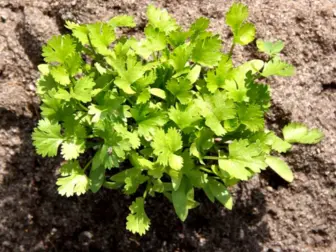
Coriander grows quickly in aquaponics system under the suitable controlled environment. It gets its all nutrients like nitrogen, potassium and phosphorus according to its need from nutrient enriched water. It gets adequate supply of water for its requirement and don’t waste water. This aquaponic system enables cultivation of these plants round the year. It also reduces the pests and disease pressure and promote healthy plants.
Spinach:

This is the vegetable that work well in grow-beds. this type of growing plants is a challenge for bulb and tube bulb plants like onions and carrots. Instead of this some plants grow successfully with wicking beds and NFT channels. These type plants normally grows within 6 to 8 weeks from seedling and 8 to 10 weeks from seeds.
Basil :
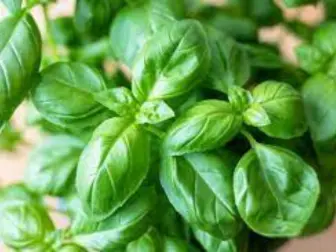
Basil is a beneficial herb for aquaponics systems due to its nutrient-rich water source. To grow basil, use a good medium, keep the pH between 6.0 and 7.0, and supply adequate light. Plant basil in containers or beds with adequate space. Maintain regular moisture levels and avoid excessive irrigation. Monitor basil plants on a regular basis for signs of pest infestations or diseases, and take preventative actions. Harvest basil leaves when they reach the required size and maturity, which usually happens 25 days after planting. Basil may thrive in aquaponics systems with the correct circumstances and care, resulting in a large supply of fresh, flavorful leaves for culinary use.
Mint :

Mint is a versatile herb that thrives in aquaponics systems, It also produces fragrant leaves for culinary, medicinal, and aromatic uses. To grow mint, select an appropriate growing medium, keep the pH between 6.0 and 7.0, and allow plenty of sunshine for rapid development. Plant mint seedlings or cuttings in containers or beds with enough space to avoid overcrowding. Maintain regular moisture levels. Monitor mint plants on a regular basis for signs of pest infestations or diseases, and take preventative actions. Mint leaves are harvested as needed for culinary or medicinal purposes, either by pinching off individual leaves or pruning entire stems. Mint may grow in aquaponic systems if given the proper conditions and care.
Strawberry :

You can grow strawberries in aquaponics systems. It provides a nutritious and delicious fruit crop. To grow strawberries, choose a well-draining medium, maintain a pH range of 5.8 to 6.5. Arrange for adequate lighting. Plant strawberries in containers or beds with proper space to prevent overcrowding. Maintain consistent moisture levels and avoid overwatering or underwatering. Introduce pollinator-friendly plants or manually hand-pollinate flowers for fruit set and development. Monitor plants regularly from pests and diseases. Harvest ripe strawberries 60 to 90 days after planting. Gently pluck or cut the fruits to avoid damage. If you follow these all guidelines you can get and yields a wonderful harvest of sweet and juicy fruits in aquaponics systems
Kale :
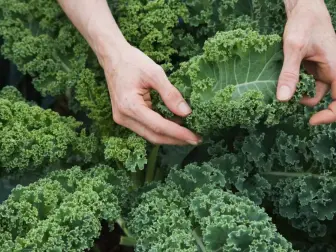
Kale is a nutrient-rich leafy green vegetable. You can grow it successfully in aquaponics systems. To grow, choose a loose, well-draining medium like coconut coir, perlite, or a soilless mix. Maintain a slightly acidic soil pH range of 6.0 to 7.5 and ensure sufficient nutrients for its leaf development. Provide adequate lighting for 12 to 16 hours per day. Plant kale in containers or grow beds with sufficient space between plants. Maintain consistent moisture levels and avoid overwatering. Monitor kale plants regularly for signs of pest infestations or diseases. Harvest kale leaves when they reach the desired size and maturity, typically 55 to 75 days after planting.
Carrots:
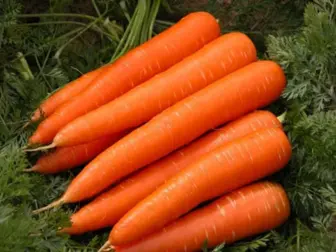
Aquaponics is a method of growing carrots, which requires specific conditions. Carrots needs slightly acidic soil with a pH range of 6.0 to 6.8, and require a stable temperature of 50 to 75 degrees Fahrenheit. Proper spacing and depth are essential for root development. It is crucial for water management and maintain consistent hydration without waterlogging. Pest and disease management is essential. Also keep clean and inspect the system regularly. Carrots are ready for harvest 60 to 80 days after planting. You can harvest carrots as gradually needed.
Nasturtium Nectar:

Nasturtium Nectar is a versatile and exciting aquaponic plant that provides both culinary and esthetic benefits. Its colorful blossoms and peppery leaves lend a distinct flavor to meals. Nasturtium thrives in nutrient-rich fish waste water, which promotes robust growth. It’s easy to grow, attracts beneficial insects, and functions as a pest deterrent. With proper care, Nasturtium plants generate continual blooms, ensuring a consistent supply of tasty flowers. Its brilliant flowers and trailing foliage add to the visual appeal of the setting.
Cucumber :

Cucumbers are a popular and profitable crop to cultivate in aquaponic systems. To grow cucumbers, use medium which is well drained, with a pH range of 5.5 to 6.5 with suitable sunlight. Plant cucumbers in containers or beds with plenty of space between them to avoid overpopulation. Maintain consistent moisture levels in the aquaponic system, avoid under-watering. Ensure that the aquaponic system attracts pollinators, or consider hand pollination cucumber blossoms. Monitor cucumber plants regularly for signs of insect damage or disease, and take preventive actions. Cucumbers are harvested when they reach the required size and maturity, which normally occurs 50 to 70 days after planting.
Bell Pepper :

Bell peppers are a nutritious and visually appealing crop. We can grow effectively in aquaponics systems. To grow, choose a well-drained medium, monitor pH and nutrient levels, provide adequate light. Plant seedlings, maintain consistent moisture then promote pollination. Do inspect regularly plants for pests or diseases. You can harvest bell peppers anytime you desire.
Tomato :

Conclude your aquaponics performance with the tomatoes. Tomatoes bring wonderful flavor and vitality and infuse your system with a burst of energy. In this aquaponics journey, these plants companions become the protagonists of your aquaponics tale. With each leaf, stem, and fruit, they contribute to a narrative of growth, balance, and bountiful harvests.
What are the benefits of aquaponics?
There are a lot of benefits of Aquaponics for both the environment and the enthusiast or expert farmer. Some of the benefits are as follows:
- Low Consumption of Water:
- No soil required:
- No chemical fertilizers or pesticides:
- Higher yields and faster growth:
- Fresh and organic food: Read More
FAQs:
Q:1 / Can I grow tomatoes in an aquaponics system?
Ans: In aquaponics, tomatoes are one of the most popular plants which you can grow. They’re good for eating fresh or processed, and they’re used as ingredients in a variety of cuisine. The market value of tomatoes is also very large in comparison to others.
Q:2 / Do plants grow faster in aquaponics?
Ans: Aquaponics systems are beneficial because they do not contain soil pests and therefore there is no need for pesticides. Plants Grow Faster because they have access to nutrients 24 hours a day, plants are growing more rapidly. For instance, lettuce grows from two months to one month faster with the Aquaponics system.
Q:3 / Does aquaponics need sunlight?
Ans: In an aquaponics system, fish do not require sunlight or other forms of light. Nevertheless, as the majority of fish need a period of daylight and darkness to produce eggs, it is possible to increase their health and fertility by adding lighting to your aquarium. If the fish are exposed to sunlight every day, they become more healthy. Plants also needs sunlight to grow in every field of farming.
Q:4 / What type of water grows plants the fastest?
Ans: Rainwater and bottled spring water are great for growing plants, but sugar or salt water actually hurts them. Plants can’t be harmed by tap water or distilled water, but you’ll notice that they’re not as tall and proud as the plants that have been fed with rain and spring water.
Q: 5 / Is aquaponics high maintenance?
Ans: The maintenance of the Aquaponics system is very minimal. On the other hand, it is necessary to check the conductivity of the water in the aquaponic system on a daily basis. The water chemistry will remain relatively constant due to the natural growth ecosystem in aquaponics systems.
Q: 6/ What liquid helps plants grow best?
Ans: There is an essential requirement for food production by photosynthesis in aquaponics system is water, as well as sunlight. Water is the main source to deliver nutrients through the root system. It’s got nutrients from roots to the top, just like human blood.
Q: 7/ How often do you change water in aquaponics?
Ans: In aquaponics, how often do you change the water? It’s almost never in a balanced system. You will need to add water to replace water lost to evaporation but the system is pretty much self-cleaning.
Conclusions:
It is essential to choose the best plants for aquaponics if you want to begin your system. Choose the right plants and fish to use in your setup for starters. In order to ensure the health of both fish and plants, it is always advisable to monitor water parameters such as pH, ammonia, nitrite or nitrate levels at planting. In addition, the success of aquaponics can be further enhanced by selecting suitable plant varieties suited for hydroponic cultivation.
Aquaponic cultivation can yield flavorful and homegrown produce with proper care. Aquaponic gardening allows plants to grow closer together due to higher nutrient availability and efficient use of space. However, it’s crucial to consider each plant’s growth habits and needs. Aquaponic systems grow faster and larger than soil-based gardening, so it is essential to provide adequate space for a healthy and productive garden. Aquaponic gardening offers control over plant environment and eliminates soil use and allows for a variety of plants.




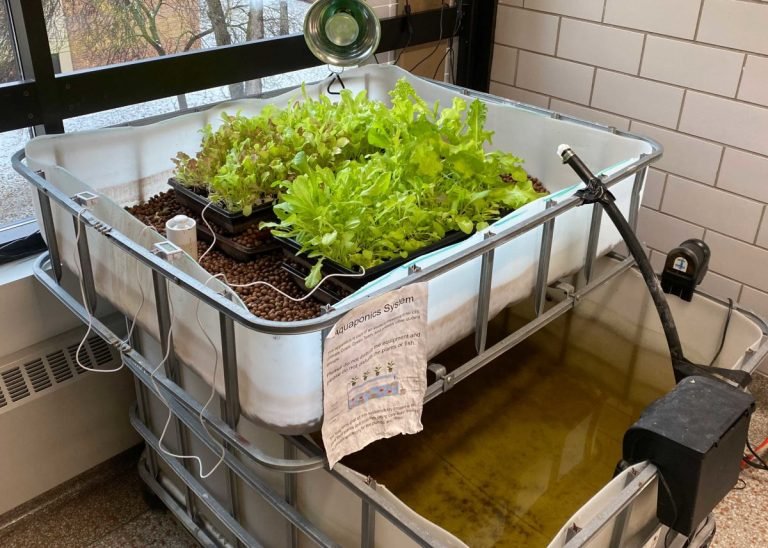



female viagra online uk
ℹ️ informative